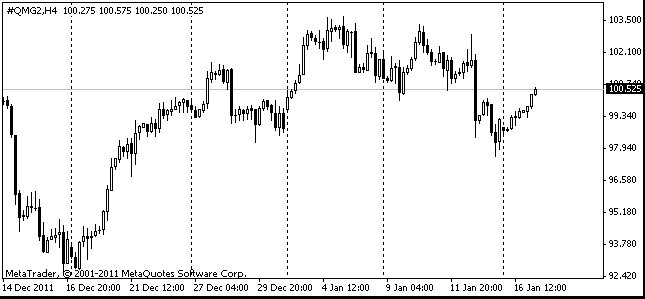EUR/usd
As seen from yesterday's rates, hopes that Spain would do without help of the EU were gradually melting away throughout the day. The pair neither bounced on bad news nor flew on an avalanche of triggering stop-orders. However, having started the day from 1.25, the euro/dollar closed it at 1.2370. Again it becomes evident that the single currency suffers the heaviest pressure at trading in America, while sessions in Asia and Europe go on by far more quietly. Yet, even then we don't observe any significant corrections in the pair. The weak Italian auction with a low bid-to-cover ratio of 1.4 looks particularly prominent against the poor news background. The yield of the Italian 10yr bonds has grown up to 6.03% against 5.66% earlier this month. Their Spanish counterparts have even a higher yield of 6.66%. Both consumer and business confidence indicators keep falling, despite the fact that they've already been showing negative figures for several months in a row. There is a feeling that Mr. draghi was wrong saying that the ‘moderate recession' in the euro zone proved to be less hard than expected. The reality prompts that the decline in 4Q last year and stagnation in 1Q this year can be followed by a very undesirable run of events in the third and fourth quarters. The journalists now seem to have turned all their eyes from Greece to Spain, whose EU membership is up in the air at present. Our hopes that the euro would make a stop at 1.25 vanished yesterday. Apparently, even if the pair performs a correction bounce this week, it will prove to be rather insignificant in comparison with the drop, preceding to it. For the first two weeks of May we kept talking that the down trend in the euro, which over the last three years has become a common thing at this time of the year, has turned out to be half as strong as before. However, in 2011 the pair performed a correction bounce in the second half of the month, and as you know this time we've seen nothing of the kind. The current situation looks more like that in 2010 when the reversal took place in June below 1.28. Now hopes for June are great, as the middle of it will be marked with elections in Greece and its end – with the EU summit.

GBP/USD
Yesterday the pound-bulls finally lost their nerve. Considering the influence produced on the sterling, the bad news from Europe can be divided into two categories. For a while the negative sentiments in Europe were accompanied by purchases of the sterling, as investors sought refuge for their money and the market of high-quality assets, denominated in the euro, significantly shrank. But now the poor news concerns the EU banking sector, which poses a threat to the banks of Albion itself. Technically, yesterday the pound broke 1.56 and then rushed down. There the movement was sharper, which points to a strong wave of triggering limit orders. The data on the country's lending in April look quite good at first sight – the figures have come in a bit better than expected. But there is not much to be happy about. Net lending to individuals has made 1.4bln, which is the medium level at least for 1 ½ yr. It is also reassuring that now the indicator doesn't sink as low as at the beginning of the crisis. However, mind the fact that since 2003 the indicator has never dropped below 8bln a month.
USD/JPY
Following the markets, USD/JPY is also on the decline, though now it is mainly fluctuating close to the upper boundary of the steep down trend, we've indicated earlier. Earlier today the pair came up close to the level of its 200-day moving average. Now trading is held at 78.80. Yesterday USD/JPY hit new local lows on the depreciation of stock indexes, and today it has sank even lower. Is the pair really going to return to the 76-78 levels, where it was trading for most part of the last year? If true, it would hardly be to the liking of the Japanese exporters and officials.

oil
Oil entered the bearish phase yesterday. According to the market methodology, it happens when the price of an asset drops by more than 20% against its local low. In fact, it took Oil just a month to do the journey. As you know, at the beginning of May its price was above $106, and yesterday it dropped below 88. It is believed that on entering the bearish phase, the asset depreciates by other 10-15% as investors have to quit the asset because of a sharp decline in it. It naturally provokes further price cuts. A vicious circle…
